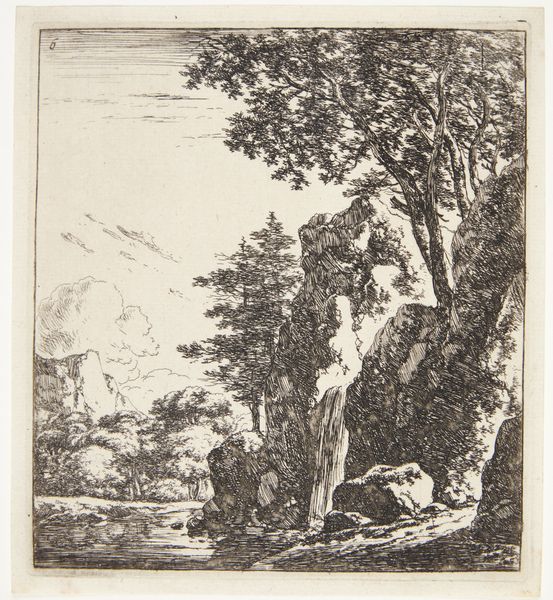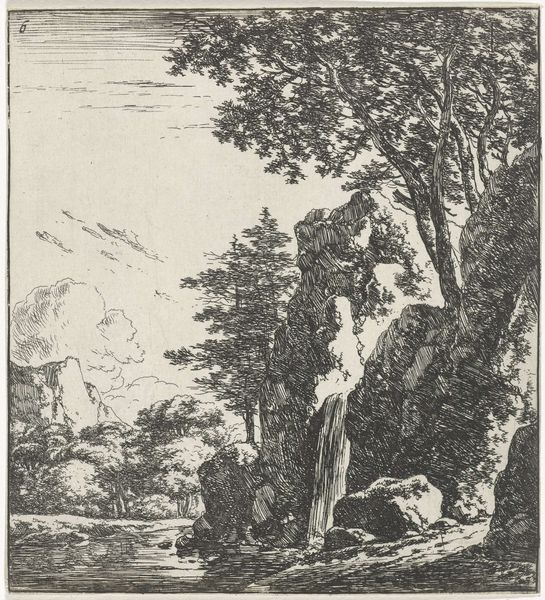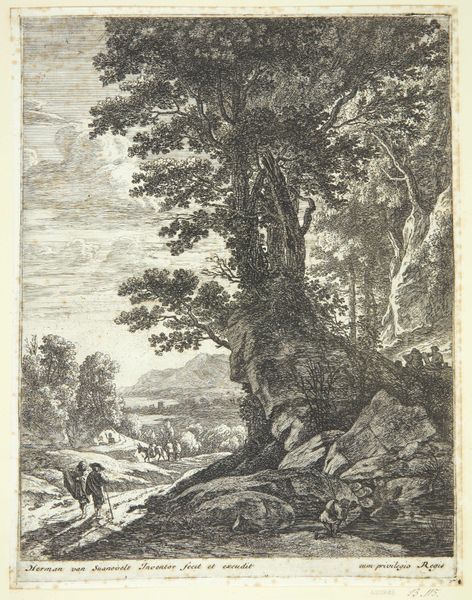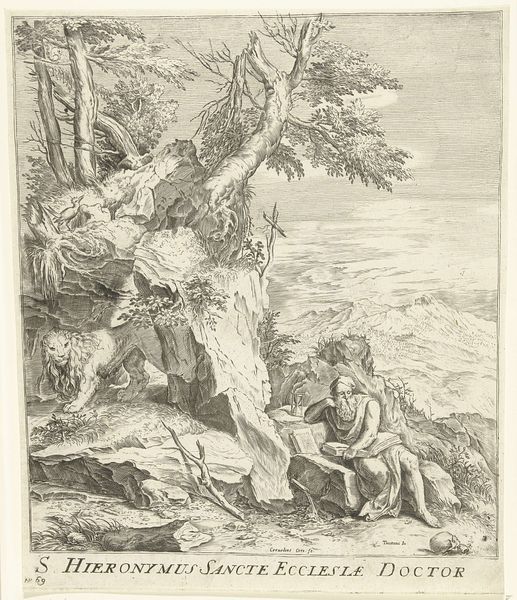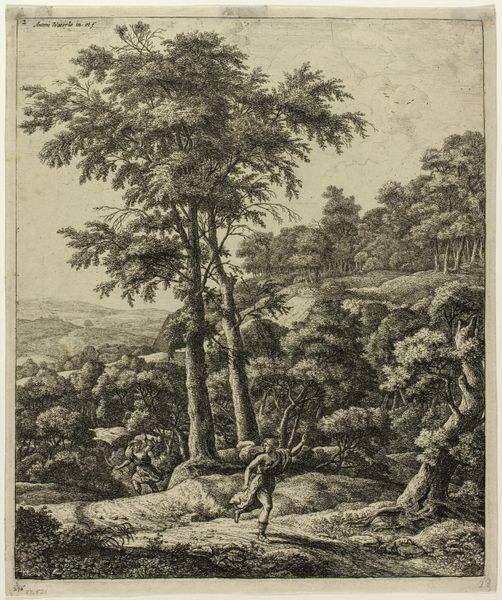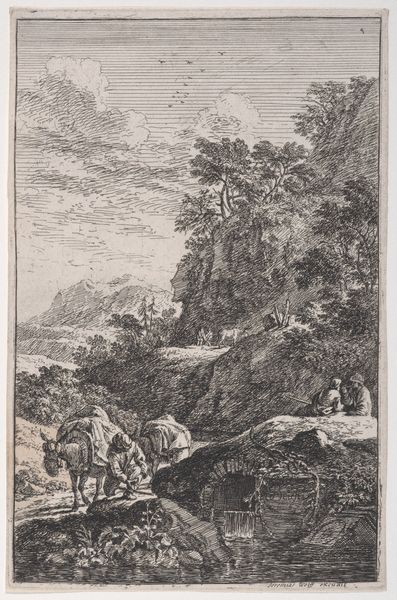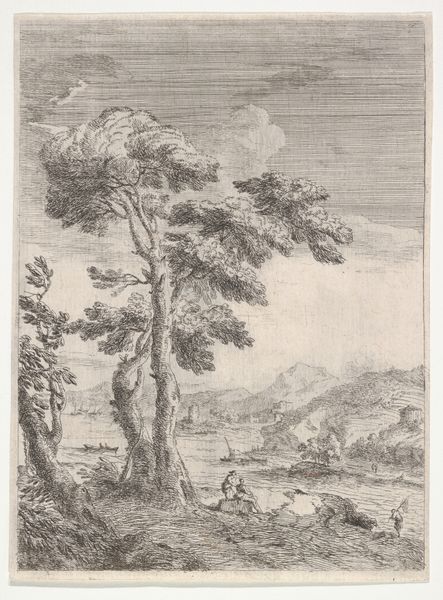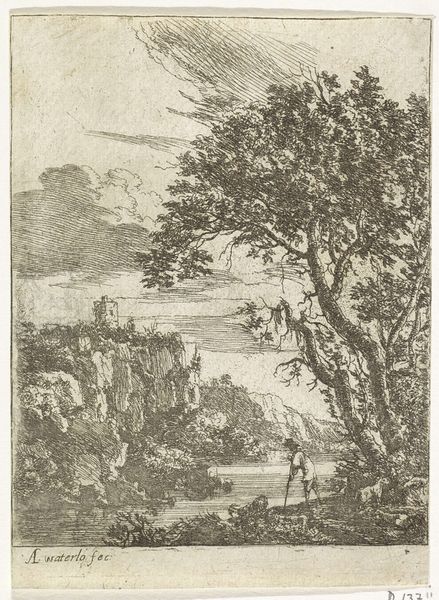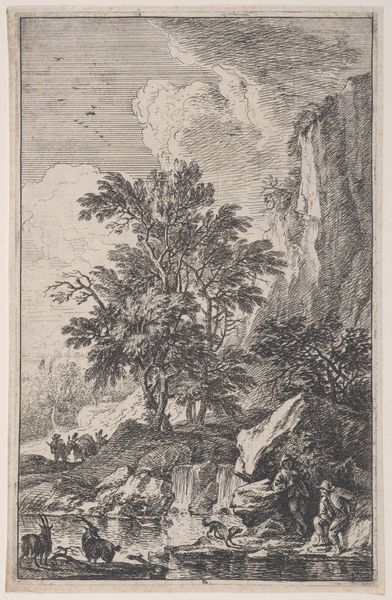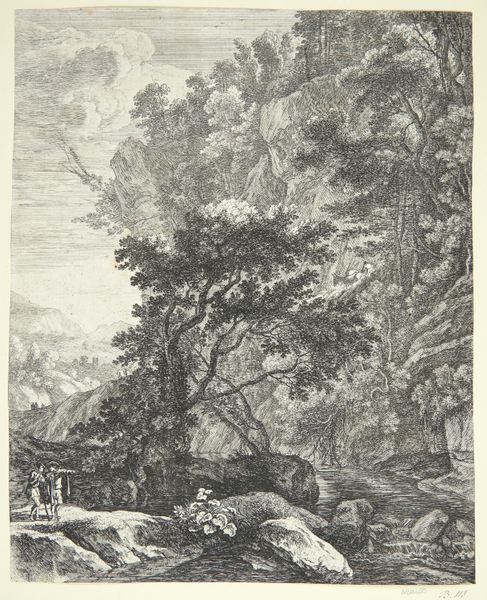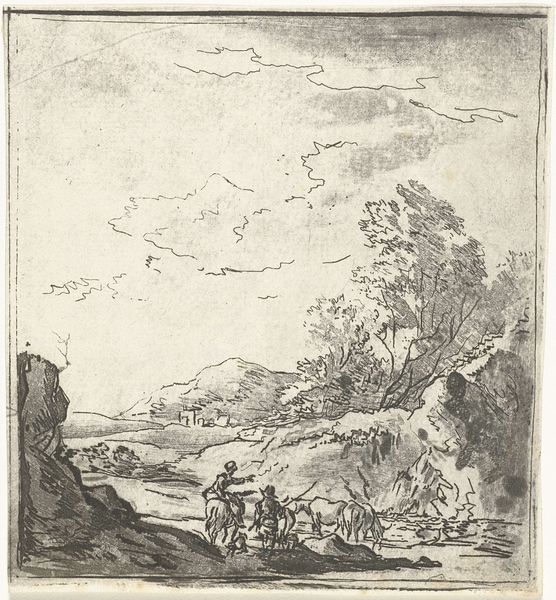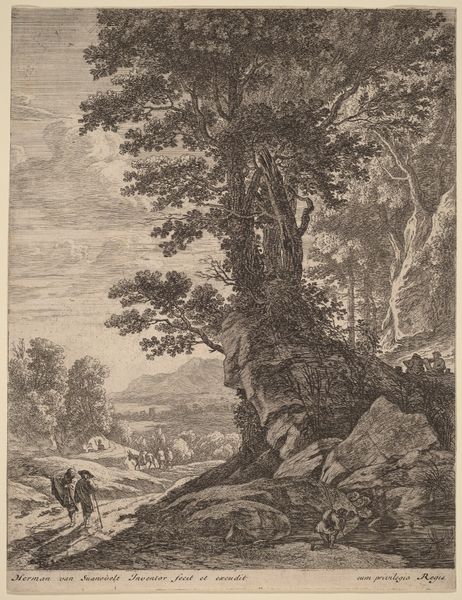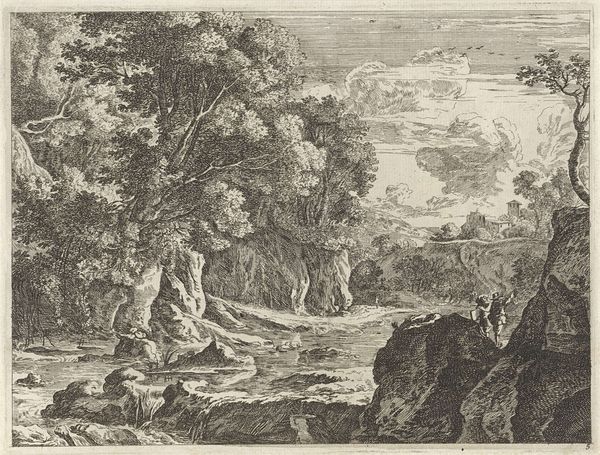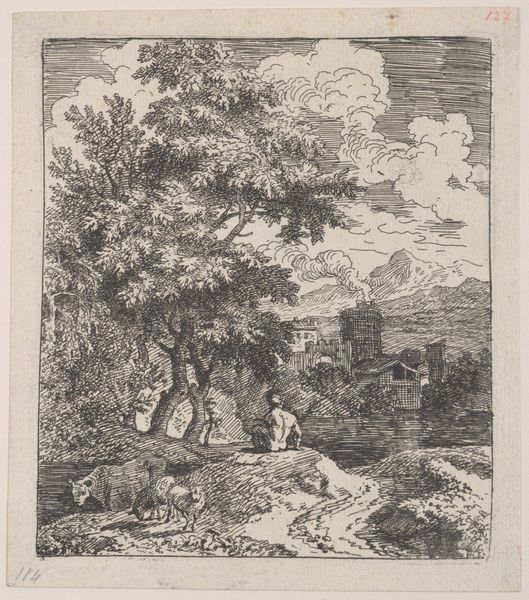
print, etching
#
baroque
#
dutch-golden-age
# print
#
etching
#
landscape
#
line
Dimensions: 133 mm (height) x 121 mm (width) (plademaal)
Curator: Here we have “Bæk mellem to klipper” by Herman Naiwincx, created sometime between 1623 and 1670. It’s currently held at the SMK, the Statens Museum for Kunst. As you can see, this work is an etching. Editor: Oh, wow. My first thought? Tranquil desolation. You get this sense of being utterly alone, but not in a bad way. It’s the kind of alone that invites introspection, sitting by the sound of gently flowing water, completely surrounded by a towering natural landscape, just taking it all in, even in its monochromatic and miniaturized etching presentation. Curator: Absolutely, Naiwincx masterfully uses line to suggest the textures and forms of this landscape. Look at the varied line weights he employs to create depth. The process of etching allows for such detail, doesn’t it? We see the rock face emerge in front of and besides clusters of trees. I mean, how fascinating is that? Etching as a medium allows for a mass-produced sense of quiet observation. It allowed the public to witness isolated nature, to own it for a short time. Editor: It’s strange, isn’t it, how this landscape almost feels stage-lit? The darker etched areas give it dramatic chiaroscuro. And this idea that an intimate work of art would become a commodity via reproduction. Even more wild: how do you think Naiwincx thought of what a potential patron of art might want on display? Did they ever witness a landscape this untamed themselves? Did he even himself? It is possible to wonder. Curator: Naiwincx's style fits into the Dutch Golden Age tradition. We’re talking detailed landscapes, accurate representations of light and shadow. Consider the social context, too. Landscapes gained popularity as the Dutch Republic thrived on trade. Land ownership represented wealth and prosperity, which translated into consumption and trade. These landscape etchings like "Bæk mellem to klipper” became highly marketable representations of those concepts and attitudes. Editor: True! A lot of folks couldn't travel but might enjoy being able to bring some distant view into their homes. Thinking about the social context enriches my experience viewing this—especially those trees rising behind the waterfall. Curator: Seeing how the means of production and social values shaped artistic output, I think, gives this quiet little scene an enormous punch. Editor: It becomes an amazing little peekhole into the mindset of an era. The artist gives it life and light while a new economy keeps its circulation humming along! Thanks for walking me through it.
Comments
No comments
Be the first to comment and join the conversation on the ultimate creative platform.
